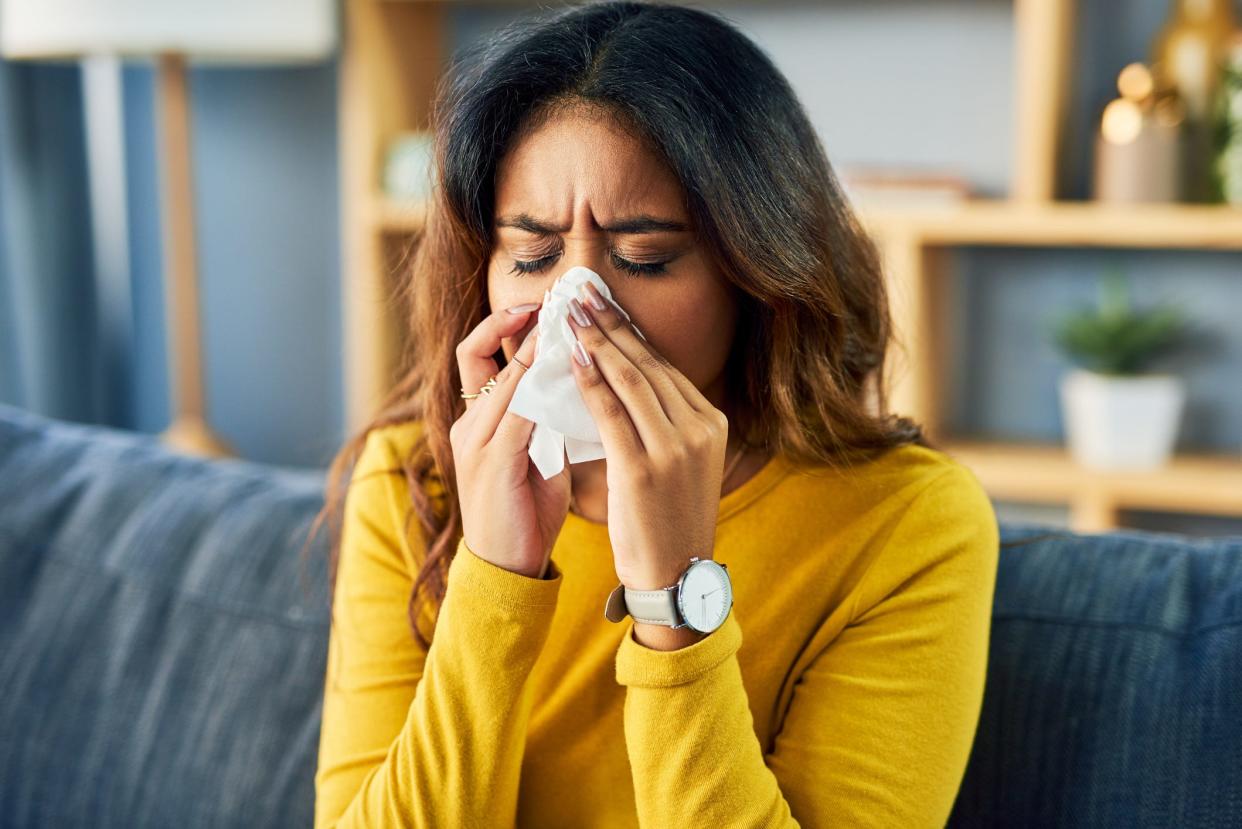Seasonal allergies got you sniffling? Why doctors say to take an antihistamine

Though many people think of allergies as only being triggered in the fall or springtime, the reality is that seasonal allergies often affect people year-round, including winter.
Because some plants and trees don't go dormant during the winter in warmer climates, people exposed to such vegetation sometimes experience allergy symptoms during cold months. More commonly, however, winter allergies flare up as a result of spending more time indoors when people are sealed up in their homes and are surrounded by allergens associated with dust, foods, pollutants brought into the home, other people, pet dander or even from rodents or insects seeking refuge from the cold.
No matter which season contributes to one's allergies though, most people who struggle with them end up taking antihistamines to treat their symptoms.
What is an antihistamine?
When the body reacts to allergens such as pet dander or pollen, it's the result of a chemical called a histamine that's produced by one's immune system. Some histamine is OK, but symptoms such as sneezing, coughing, congestion, watery eyes and itchy skin are the result of the body producing too much histamine when overreacting to something it views as a threat, even though most allergens actually aren't.
An antihistamine, then, is a medication used against histamine to treat or prevent common allergy symptoms. "Antihistamines work by blocking how the body responds to histamine," explains Farheen Mirza, MD, allergy and immunology at Northwestern Medicine Central DuPage Hospital. Antihistamines are also commonly called anti-allergy or simply allergy medications.
There are both first- and second-generation antihistamines that are distinguished by when the Food and Drug Administration (FDA) approved them. There are also two different classifications or subtypes of antihistamines that have slightly different functions and target different symptoms or conditions. Per Cleveland Clinic, the first subtype is called H-1 receptor antagonists or H-1 blockers, and the second subtype is called H-2 receptor antagonists or H-2 blockers.
What is the most common antihistamine?
Antihistamines are available in many forms including nasal sprays, eyedrops, pills, liquids, creams, and, in more extreme cases, as inhalers or injections. Some are available over-the-counter while others are available by prescription only.
"Examples of FDA-approved antihistamines include loratadine (Claritin), fexofenadine (Allegra), cetirizine (Zyrtec), diphenhydramine (Benadryl), levocetirizine (Xyzal), and hydroxyzine (Vistaril)," says Matthew Rank, MD, a physician who works in the division of allergy, asthma and clinical immunology with Mayo Clinic in Arizona.
Are antihistamines safe?
Though the experts say that antihistamines are considered safe and are commonly recommended by doctors to treat allergy symptoms, allergy medications do have some common mild side effects. These include drowsiness, headache, and drying out of one's nose, mouth or throat. More rarely, antihistamines can also cause nausea, constipation, or a loss of appetite. Serious but rare side effects include blurred vision, muscle weakness or trouble urinating.
Anyone who experiences serious side effects related to medication should consult with their physician right away. For everyone else, antihistamines can bring much-needed relief from uncomfortable or debilitating allergy symptoms. "Antihistamines are important because they are used to treat allergic symptoms such as hives, congestion, runny nose or sneezing," says Mirza.
Rank agrees, noting that the allergens that cause the release of histamine are everywhere and affect everyone differently, so having medicines to treat them is needful. "Antihistamines were developed to help reduce and relieve allergy symptoms and they do that," he says.
This article originally appeared on USA TODAY: What is an antihistamine? Here's what doctors suggest for allergies
